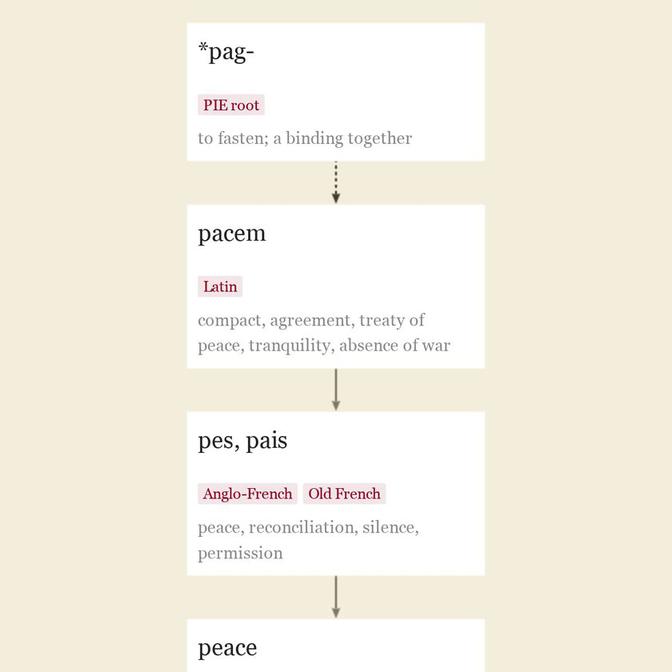peacetime n.
also peace-time, "
Entries linking to peacetime

mid-12c., pes, "
It replaced Old English frið, also sibb, which also meant "
Used in various greetings from c. 1300, from Biblical Latin pax, Greek eirēnē, which were used by translators to render Hebrew shalom, properly "
The Native American peace pipe, supposedly smoked as the accompaniment of a treaty, is recorded by 1760. Peace-officer "
Old English tima "
Abstract sense of "
to have a good time ( = a time of enjoyment) was common in Eng. from c 1520 to c 1688; it was app. retained in America, whence readopted in Britain in 19th c. [OED]
Time of day (now mainly preserved in negation, i.e. what someone won't give you if he doesn't like you) was a popular 17c. salutation (as in "
The times "
Time warp is attested by 1954; time-traveling in the science fiction sense is by 1895 in H.G. Wells' "
Jones [archaeologist of A.D. 5139] potters about for a while in the region which we have come to regard as New York, finds countless ruins, but little of interest to the historian except a calcified direction sheet to something called a "Time Capsule." Jones finds the capsule but cannot open it, and decides, after considerable prying at the lid, that it is merely evidence of an archaic tribal ceremony called a "publicity gag" of which he has already found many examples. [Princeton Alumni Weekly, April 14, 1939]
To do time "
updated on March 05, 2020